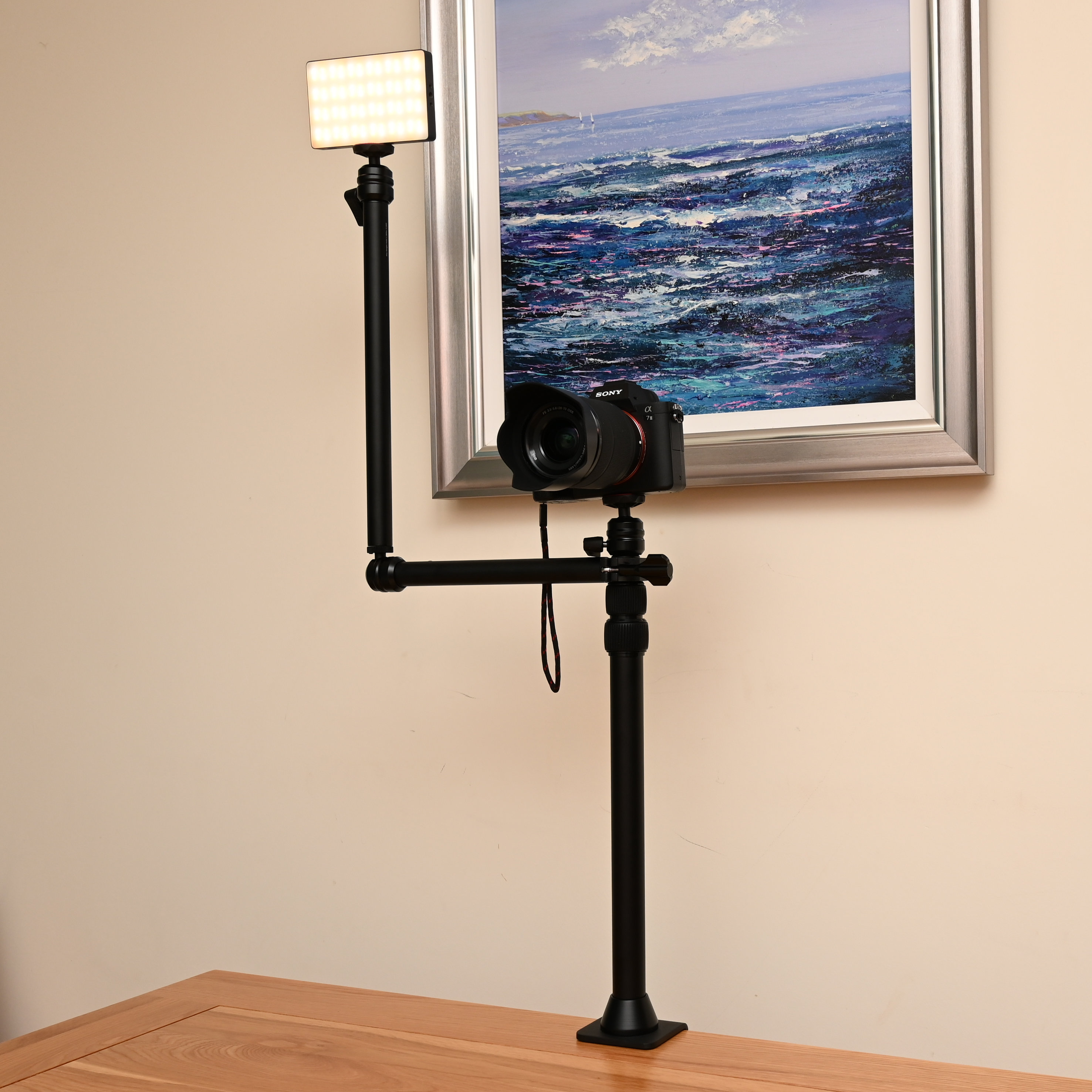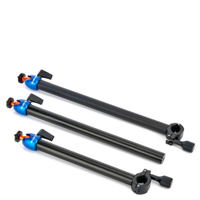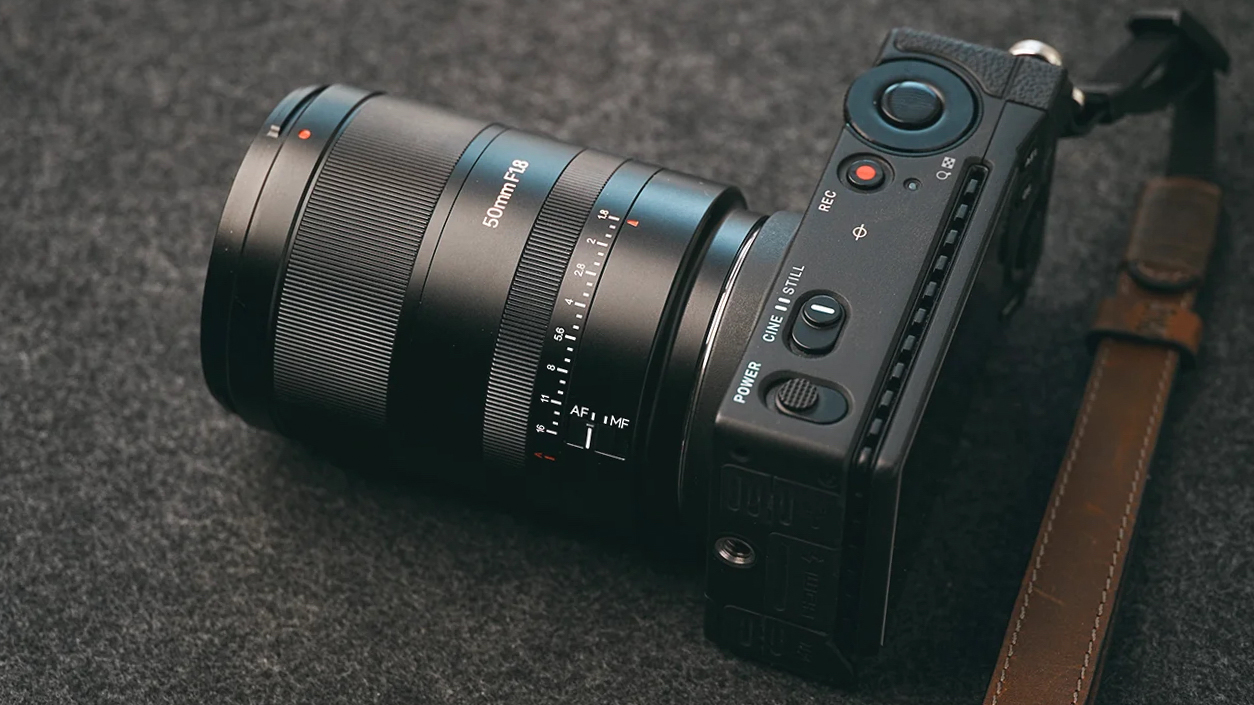Digital Camera World Verdict
The Neewer Table Top Stand is a comparatively heavyweight item. The main center pole and desktop clamp weigh about twice as much as in many similar kits. I like its sturdy, robust feel and that it comes with two auxiliary arms, enabling the addition of an LED lamp, mic or other accessory. It’s also great value for such a comprehensive, heavy-duty kit.
Pros
- +
Hefty 4kg / 8.8lb load rating for center pole
- +
Dual auxiliary arms add versatility
- +
Phone mount included
Cons
- -
Twice as heavy as some desk mounts
- -
Only 0.9kg / 1lb load rating for arms
- -
Might be overkill for some
Why you can trust Digital Camera World
I’ve amassed quite a collection of Neewer photographic accessories over the years and keep coming back for more. I just can’t resist good quality at a budget price. The Neewer Table Top Stand follows suit, being a very comprehensive camera desktop support that’s well made and very reasonably priced. More than just a pole that attaches to a table or desk, with a ball head on the top, it also includes two auxiliary arms, both of which have their own ball heads for full articulation. You also get a phone mount and thread adapters to step up the attachment size from 1/4” to 3/8” or 5/8” if required. The Neewer aims to be one of the best camera desk mounts but for a viable alternative, you could also take a look at the best tabletop tripods or even the best budget tripods.

Neewer Table Top Stand: Specifications
| Center pole height | 44-103cm / 17.3-40.6" |
| Center pole tube diameters | 28 / 25 / 22mm |
| Center pole weight | 1.2kg / 2.65lb |
| Aux Arm 1 length | 28cm / 11" |
| Arm diameters | 22mm |
| Aux Arm 1 weight | 180g / 6.3oz |
| Max tabletop thickness | 90mm / 3.5" |
| Max load | 4kg / 8.8lb (pole) 0.9kg / 1lb (arm) |
| Ball head mount | 1/4"-20 + phone mount bracket |
Neewer Table Top Stand: Price
This extensive kit of parts sells for around $40/£44. The closest competing table top mounting system that I’ve used is the 3 Legged Thing CDMS-2A, which costs $60/£47. That makes the Neewer product very competitive on price in the USA, less so in the UK. For my money, the 3 Legged Thing mount feels rather more luxurious but the Neewer has a stronger load rating (at least for the center pole) and can be mounted on thicker tabletops.
Neewer Table Top Stand: Design & Handling
If I had to sum up this camera desk mount in one word, it would be ‘chunky’. Starting at the bottom, it has an oversized desktop clamp. Where most similar mounts have a clamp that can accommodate a tabletop thickness of up to about 50mm / 2", the Neewer goes all the way up to 90mm / 3.5". That can certainly come in handy if you’ve got chunky furniture.

Next up is the 3-section extending center pole, which again has unusually large diameters for each piece of tubing, at 28 / 25 / 22mm. Coupled with a tough looking mini ball head on top, that equates to a beefy heavy maximum payload of 4kg / 8.8lb. Suffice it to say that it’ll take the weight of pretty much any camera you want to mount on your desk or table. Bear in mind, however, that if you want to mount the camera on one or both of the auxiliary arms, for example to add height or shoot directly downwards at something on the table, the maximum load rating drops to just 0.9kg / 1lb.

The Neewer is quick and easy to use. The twist clamps for the two extending sections of the center pole work with smooth simplicity, as does the ball head. The locking levers for the heads and both auxiliary arms are spring-loaded and mounted on hexagonal shafts, so you can pull them out and relocate them at the most convenient orientation.

There’s a good range of height adjustment for the center pole, which extends from 44-103cm / 17.3-40.6" in operating height above the tabletop. The auxiliary arms have a length of 28cm / 11" for the one that attaches to the center pole, and 35cm / 13.8" for the second. The idea is that you attach the first arm to the upper section of the center pole, and can then add a camera or other accessory to its mini ball head. Alternatively, you can add the second auxiliary arm to the ball head of the first, rotate it to any angle, and then add a camera or accessory to the ball head at the top of the second arm. That gives plenty of versatility for setup.

If you’re shooting with a phone rather than a camera, a spring-loaded phone mount is supplied with the kit, which can connect to any of the ball heads via one of two threaded brass sockets, one at the base and the other on the back side.
Neewer Table Top Stand: Performance
Naturally, any desktop camera mount is only as sturdy as the desk or table that you’re mounting it on. Even so, when attaching the Neewer to a solid dining table or weighty office desk, I found it to be very resistant to any flexing or wobble. Like with most competing stands, the tabletop clamp has rubberized surfaces to avoid any damage to furniture.

The telescopic sections of the center pole extend and contract nice and smoothly, while the twist-action clamps lock everything off very solidly. The same goes for the mini ball heads, which proved very resistant to sagging in my testing, using a Sony A7 II and kit zoom lens, that has a combined weight of about 920g / 2lb. I was equally impressed with the performance of the dual auxiliary arms, when adding LED lamps and other accessories, but there’s a disparity in the load rating, which is very much lower for the arms than for the center pole.


Neewer Table Top Stand: Verdict
For a camera desk mount, the Neewer is a comparatively heavyweight affair. The load rating of the center pole is mightier than most, well suited to heavier camera/lens combinations, and I like that the desk clamp can accommodate thicker tabletops than most. All in all, it’s a very good kit at a reasonable price. However, the much lower load capacity of the arms can be a concern if you want to mount a camera on one of the arms instead of on the center pole.
| Features | For a versatile camera desk mount, this kit has pretty much every feature you could need. | ★★★★★ |
| Design | The design makes the Neewer easy to use but the aux arms have a relatively low payload | ★★★★ |
| Performance | The performance is outstanding for the center pole but more average for the auxiliary arms. | ★★★★ |
| Value | It’s very good value for such a versatile kit with so many components. | ★★★★ |

Should you buy the Neewer Table Top Stand?
✅ Buy this...
- You need a camera desk mount that will fit to particularly thick tabletops, up to 90mm / 3.5" in size.
- You want to be able to add an LED lamp or other accessories using one or two auxiliary arms.
🚫 Don't buy this...
- You want to be able mount a heavy camera on one of the auxiliary arms instead of on the center pole.
- You’d rather have a more lightweight camera desk mount that’s easier to slip into a bag and carry around.
Alternatives
Something of a Rolls Royce product, the 3 Legged Thing Computer Desk Mount system is lavishly engineered, luxuriously finished and works wonderfully well. Three kits are available, comprising just the center pole with table clamp and ball head for $35/£27, the CDMS-1A kit, which adds a single auxiliary arm for $50/£39 and the range-topping CDMS-2A kit with center pole and dual arms at $60/£47.
Costing around £36/$40, the Tarion Camera Desk Mount is different from most competing systems as it has three main tubular sections each of the same 24mm diameter, which are joined end to end in rotatable clamps. It therefore works well as an upright stand or at pretty much any angle, ideal if you want to point the camera directly downwards to shoot something flat on a table.
Matthew Richards is a photographer and journalist who has spent years using and reviewing all manner of photo gear. He is Digital Camera World's principal lens reviewer – and has tested more primes and zooms than most people have had hot dinners!
His expertise with equipment doesn’t end there, though. He is also an encyclopedia when it comes to all manner of cameras, camera holsters and bags, flashguns, tripods and heads, printers, papers and inks, and just about anything imaging-related.
In an earlier life he was a broadcast engineer at the BBC, as well as a former editor of PC Guide.




